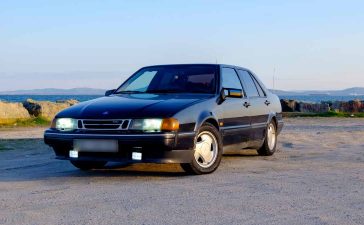This is a great video for those who have the tools and want to do something yourself to your car. Video describes How to replace the front rotors and brake pads on SAAB 9-3 (9-5 93 95), and The procedures are similar for SAAB 9-5, step-by-step:

This is a great video for those who have the tools and want to do something yourself to your car. Video describes How to replace the front rotors and brake pads on SAAB 9-3 (9-5 93 95), and The procedures are similar for SAAB 9-5, step-by-step:
@ 2014-2025 -Saabplanet.com. All Right Reserved.







This guy does not look up the torque values of the caliper carrier bolts and caliper slide pins, and he does not use a torque wrench to tighten them correctly.
He just does the nuts as tight as he can then turns them a further quarter turn !!
THIS IS WRONG AND POTENTIALLY VERY DANGEROUS because it could cause the bolts to fail, and loss of braking. Look up the proper torque values and use a torque wrench to ensure the bolts are tightened correctly according to manufacturer’s specifications.
Secondly, it is much easier to clean the discs/rotors BEFORE putting them on the hubs, lol !! Then screw in the allen screw to hold the new disc/rotor steady on the hub to stop it slopping around and getting scratched while you reattach the calliper carrier.
Lastly, it is good practice to tighten wheel bolts going from one to the next one opposite, not the one immediately adjacent.